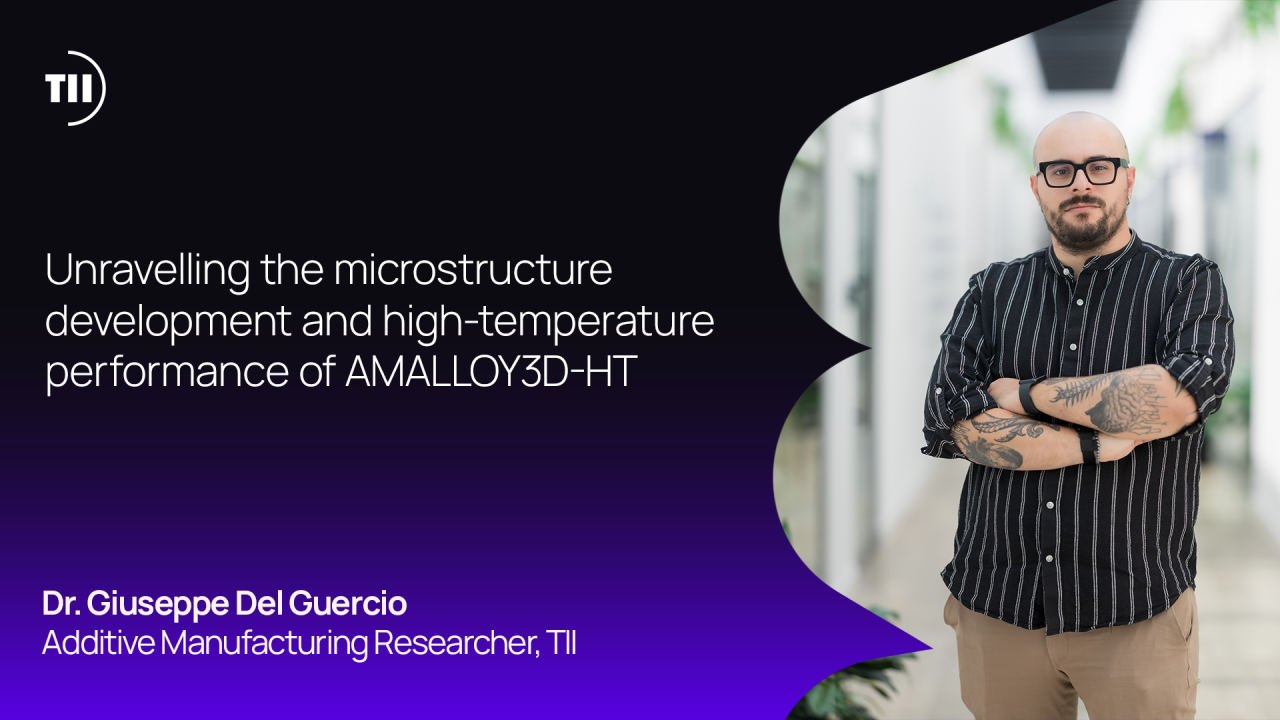In the ever-evolving field of material science, the development of advanced alloys for high-performance applications is crucial. Aluminum alloys that resist high temperatures in particular are essential in critical components manufactured via Additive Manufacturing (AM), which is the process of joining materials to make parts from 3D model data. Aluminum alloys that resist high temperatures can be used in combustion engine pistons and cylinder heads, turbo chargers, impellers as well as actuators, and brake calipers.
One such innovation of aluminum alloy resistant to high temperatures is AMALLOY3D-HT, an alloy designed by the Technology Innovation Institute (TII) in Abu Dhabi to withstand extreme conditions while maintaining superior performance.
AMALLOY3D-HT, filed for US Patent last year, is a custom alloy developed for AM applications. Its unique composition and properties make it ideal for use in industries that demand high strength and durability at elevated temperatures such as aerospace, defense and space technology.
AM applications up to 300°C
When TII, the global scientific research center and the applied research pillar of Abu Dhabi’s Advanced Technology Research Council, began working on aluminum alloys for high-temperature applications, the goal was to create a high-strength aluminum alloy for Powder Bed Fusion – Laser Beam (PBF-LB, a type of AM technology) that would be suitable for high-temperature applications up to 300°C.
Traditional Aluminum Matrix Composites (AMCs), materials created by reinforcing aluminum alloys with ceramic particles or fibers, open new possibilities for the design of novel grades for PBF-LB thanks to their exceptional strength. However, they present a challenge because they typically struggle with high-temperature performance due to poor thermal stability.
In order to quickly optimize the chemical composition, commercially available powders were blended together and processed by PBF-LB to create the alloy in-situ. To achieve high-temperature resistance, we started with a well-known commercial aluminum. While it offered good processability, such material presented limited properties at high temperature. Therefore, in order to improve the performances at elevated temperatures, we added a transition metal in a quantity tailored to avoid hot crack formation. This addition proved to be beneficial also for room temperature performances, thermal stability and thermal conductivity. Lastly, ceramic nanoparticles were added to the alloy, with the specific aim of refining the microstructure and further improving its performances. The results showed the presence of exceptional ultrafine grain structure, able to further boost the performances of the base material. The result was impressive, with AMALLOY3D-HT offering the highest yield strength against key market players at a temperature of 300°C.
What’s next?
Our R&D development activities are still ongoing, aiming at further improving and refining the properties of AMALLOY3D-HT. In these regards, we recently produced in-house our own prealloyed powders using ultrasonic atomization, a process suitable for small production batches. The parts additively manufactured using such powders showed properties in alignment with their in-situ counterparts, confirming the exceptional results achieved in the first development stint. In addition, we recently received a large batch of prealloyed gas atomized powders, produced with industrial system for mass production. Our R&D efforts in this field are still ongoing, with the team focusing on tuning the PBF-LB process parameters on commercial machines and the development of tailored heat treatments. The preliminary results proved to be very promising towards the maximization of the AMALLOY3D-HT potential.
Finally, our objective is also to manage the rights to use AMALLOY3D powders in production.
AMALLOY3D-HT has already proven, thanks to its microstructure, that it is a breakthrough innovation that successfully solves long-standing issues faced by the metal AM industry pertaining to the PBF-LB technique.
Watch this space.


